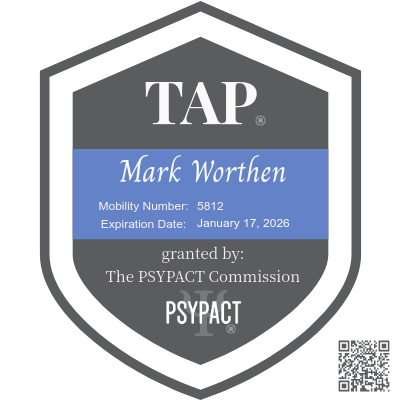- Home
- Clinical vs. Forensic
Clinical vs Forensic Psychology
June 10, 2024 – Clinical vs. Forensic Psychology: Chart comparing and contrasting clinical and forensic psychological evaluations—roles, obligations, goals, ethical considerations, etc.
The chart below integrates and summarizes two seminal publications on this critical distinction between clinical and forensic psychology and psychiatry: Greenberg & Shuman (1997) and Strasburger, Gutheil, & Brodsky (1997).1
See the Bibliography for ethics codes, specialty guidelines, and articles or book chapters that discuss exceptions to rule. The recommendation to distinguish between clinical vs. forensic psychology has its limitations (see Melton et al., 2018, pp. 90–92 for a succinct review).
|
Clinical vs. Forensic Psychological Assessment1 |
Treating Psychologist |
Forensic Psychologist |
|---|---|---|
|
Approach |
Supportive, accepting, empathic. |
Neutral, objective. |
|
Primary abilities drawn upon |
Psychotherapeutic assessment and treatment skills. |
Medico-legal evaluation techniques. |
|
Nature of hypothesis testing |
Diagnostic criteria for the purpose of helping the patient. |
Legal criteria for the purposes helping the trier-of-fact. |
|
Scrutiny applied to information supplied by the patient/claimant |
Self-report is generally accepted at face value. |
Self-report is supplemented by multiple sources of collateral information and is scrutinized by the adjudicator. |
|
Nature of relationship |
Helping, treating. |
Evaluative – respectful, but not designed to treat disorders. |
|
Goal |
Help the patient achieve therapeutic goals. |
Help the adjudicator answer legal questions. |
|
Role of critical judgment |
The basis of the relationship is therapeutic alliance. Critical judgment is likely to be counter-therapeutic. |
Critical judgment is essential to maintain objectivity and independence and to seek the truth. |
|
Ethical considerations |
Offering opinions for legal purposes places the treating clinician in a potential dual role conflict2 |
Forensic psychologists avoid dual role conflicts by conducting an evaluation only and not subsequently seeing evaluees for treatment. |
|
Type of “reality” |
Psychic reality3 |
Objective reality |
|
Assessment of symptom exaggeration or feigning |
Rarely done because of the likely negative impact on the therapeutic alliance. |
An incentive to exaggerate or feign mental disorder symptoms often exists when conducting a forensic mental health evaluation.4 |
|
Agency – for whom does the psychologist work? |
For the benefit of the patient. |
For the benefit of the adjudicator. |
|
Footnotes 1 Adapted from: Greenberg, S. A., & Shuman, D. W. (1997). Irreconcilable conflict between therapeutic and forensic roles. Professional Psychology: Research And Practice, 28(1), 50-57. doi:10.1037/0735-7028.28.1.50 and Strasburger, L. H., Gutheil, T. G., & Brodsky, A. (1997). On wearing two hats: Role conflict in serving as both psychotherapist and expert witness. The American Journal Of Psychiatry, 154(4), 448-456. 2 See Specialty Guidelines for Forensic Psychology, 4.02 Multiple Relationships: “A multiple relationship occurs when a forensic practitioner is in a professional role with a person and, at the same time or at a subsequent time, is in a different role with the same person; is involved in a personal, fiscal, or other relationship with an adverse party; at the same time is in a relationship with a person closely associated with or related to the person with whom the forensic practitioner has the professional relationship; or offers or agrees to enter into another relationship in the future with the person or a person closely associated with or related to the person (EPPCC Standard 3.05). Forensic practitioners strive to recognize the potential conflicts of interest and threats to objectivity inherent in multiple relationships. Forensic practitioners are encouraged to recognize that some personal and professional relationships may interfere with their ability to practice in a competent and impartial manner and they seek to minimize any detrimental effects by avoiding involvement in such matters whenever feasible or limiting their assistance in a manner that is consistent with professional obligations.” 3 See Strasburger, L. H., Gutheil, T.G., & Brodsky, A. (1997). On wearing two hats: role conflict in serving as both psychotherapist and expert witness. American Journal of Psychiatry, 154, 448-456. - “The process of psychotherapy is a search for meaning more than for facts. In other words, it may be conceived of more as a search for narrative truth … than for historical truth. Whereas the forensic examiner is skeptical, questioning even plausible assertions for purposes of evaluation, the therapist may be deliberately credulous, provisionally “believing” even implausible assertions for therapeutic purposes. The therapist accepts the patient’s narrative as representing an inner, personal reality, albeit colored by biases and misperceptions. This narrative is not expected to be a veridical history; rather, the therapist strives to see the world ‘through the patient’s eyes.’ Personal mythologies are reviewed, constructed, and remodeled as an individual reflects on himself or herself and his or her functioning.” 4 See Gold, L. H., Anfang, S. A., Drukteinis, A. M., Metzner, J. L., Price, M., CM, Wall, B. W., Wylonis, L., & Zonana, H. V. (2008). AAPL practice guideline for the forensic evaluation of psychiatric disability.The Journal of the American Academy of Psychiatry and the Law, 36(4), S3–S50. - "Although it is not possible to determine precisely how frequently disability claimants feign or exaggerate mental problems, studies and estimates over the past 25 years have suggested that the incidence may be as high as 30 percent. When conducting a disability evaluation, therefore, the psychiatrist should always consider the possibility that the claimant is malingering. Exaggeration or magnification of symptoms is often more common than complete faking of illness or injury and can make the objective assessment of true impairment and symptoms more challenging" (p. S19). |
||
Clinical vs. Forensic Psychology: Bibliography
Aᴍᴇʀɪᴄᴀɴ Psʏᴄʜᴏʟᴏɢɪᴄᴀʟ Assᴏᴄɪᴀᴛɪᴏɴ, Eᴛʜɪᴄᴀʟ Pʀɪɴᴄɪᴘʟᴇs ᴏғ Psʏᴄʜᴏʟᴏɢɪsᴛs ᴀɴᴅ Cᴏᴅᴇ ᴏғ Cᴏɴᴅᴜᴄᴛ (2017), https://www.apa.org/ethics/code (esp. Standards 3.05 Multiple Relationships, 3.06 Conflict of Interest, & 9.01 Bases for Assessments).
American Psychological Association, Specialty Guidelines for Forensic Psychology, 68 Aᴍ. Psʏᴄʜ. 7 (2013), https://www.apa.org/practice/guidelines/forensic-psychology (esp. Guidelines 4.02.01 Therapeutic-Forensic Role Conflicts & 4.02.02 Expert Testimony by Practitioners Providing Therapeutic Services).
Aᴍᴇʀɪᴄᴀɴ Mᴇᴅɪᴄᴀʟ Assᴏᴄɪᴀᴛɪᴏɴ, AMA Cᴏᴅᴇ ᴏғ Mᴇᴅɪᴄᴀʟ Eᴛʜɪᴄs (hereinafter AMA Eᴛʜɪᴄs Cᴏᴅᴇ), https://code-medical-ethics.ama-assn.org/
AMA Eᴛʜɪᴄs Cᴏᴅᴇ, chap. 1, Patient-Physician Relationships, Opinion 1.2.6 – Work-Related & Independent Medical Examinations, https://code-medical-ethics.ama-assn.org/ethics-opinions/work-related-independent-medical-examinations
AMA Eᴛʜɪᴄs Cᴏᴅᴇ, chap. 3, Privacy, Confidentiality & Medical Records, Opinion 3.2.3 – Industry-Employed Physicians & Independent Medical Examiners, https://code-medical-ethics.ama-assn.org/ethics-opinions/industry-employed-physicians-independent-medical-examiners
Stuart A. Anfang, Liza H. Gold & Donald J. Meyer, AAPL Practice Resource for the Forensic Evaluation of Psychiatric Disability, 46 J. Aᴍ. Aᴄᴀᴅ. Psʏᴄʜɪᴀᴛʀʏ L. S2 (2018), https://jaapl.org/content/jaapl/46/1_Supplement/S2.full.pdf
Stuart A. Greenberg & Daniel W. Shuman, Irreconcilable Conflict between Therapeutic and Forensic Roles, 28 Pʀᴏ. Psʏᴄʜ. Rsᴄʜ. & Pʀᴀᴄ. 50 (1997), https://doi.org/10.1176/ajp.154.4.448
Gᴀʀʏ B. Mᴇʟᴛᴏɴ ᴇᴛ ᴀʟ., Psʏᴄʜᴏʟᴏɢɪᴄᴀʟ Eᴠᴀʟᴜᴀᴛɪᴏɴs ғᴏʀ ᴛʜᴇ Cᴏᴜʀᴛs: A Hᴀɴᴅʙᴏᴏᴋ ғᴏʀ Mᴇɴᴛᴀʟ Hᴇᴀʟᴛʜ Pʀᴏғᴇssɪᴏɴᴀʟs ᴀɴᴅ Lᴀᴡʏᴇʀs 90–92 (4th ed., 2018).
Gérard Niveau, Tony Godet & Birgit Völlm, What Does Impartiality Mean in Medico-Legal Psychiatry? An International Survey, 66 Iɴᴛ'ʟ J. L. & Psʏᴄʜɪᴀᴛʀʏ 101505 (2019), https://doi.org/10.1016/j.ijlp.2019.101505
Paul M. Richards & Hal S. Wortzel, Avoiding Dual Agency in Clinical and Medicolegal Practice, 21 J. Psʏᴄʜɪᴀᴛʀɪᴄ Pʀᴀᴄ. 370 (2015), https://journals.lww.com/00131746-201509000-00006
Larry H. Strasburger, Thomas G. Gutheil, & Archie Brodsky, On Wearing Two Hats: Role Conflict in Serving as Both Psychotherapist and Expert Witness, 154 Aᴍ. J. Psʏᴄʜɪᴀᴛʀʏ 448, https://doi.org/10.1176/ajp.154.4.448
Dr. Worthen provides Independent Psychological Exams & Consultation to Attorneys
► Employment Law (ADA claims, harassment allegations, fitness for duty, workers compensation)
► Civil Competencies (guardianship, testamentary capacity)
► Psychological injury (tort actions, insurance)
► Veterans disability claims (specializing in complex cases)
What Do You Think?
I value your feedback!
If you would like to comment, ask questions, or offer suggestions about this page, please feel free to do so. Of course, keep it clean and courteous.
You can leave an anonymous comment if you wish–just type your first name.
If you want to receive an email when someone replies to your comment, click the icon on the lower right of the comment box to use Google Sign-in. (Your email remains private.)
Important: Do not type your email address or other identifying information into your comment as it will appear on the Internet for everyone to see ... and for spam bots to harvest so that spammers can sell your email address to other spammers.
How did you build this website?
I used Solo Build It! to build this website in 2004 and still use it today, especially for the extremely helpful business guidance and the superior search engine optimization.
Note: If you click on one of these links and you decide to purchase Solo Build It! I earn a small affiliate commission. Your cost is the same either way. If you do not want me to earn an affiliate commission, just google "solo build it".



